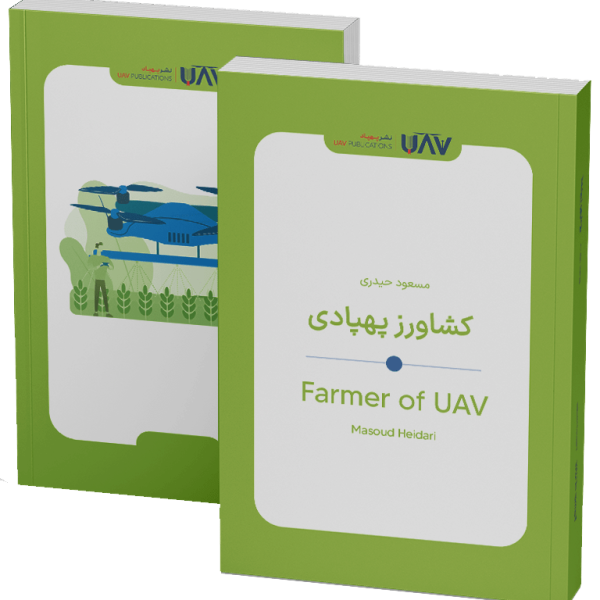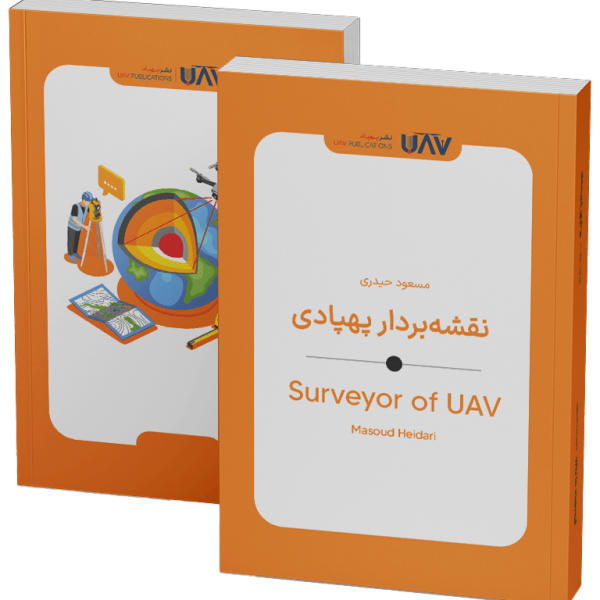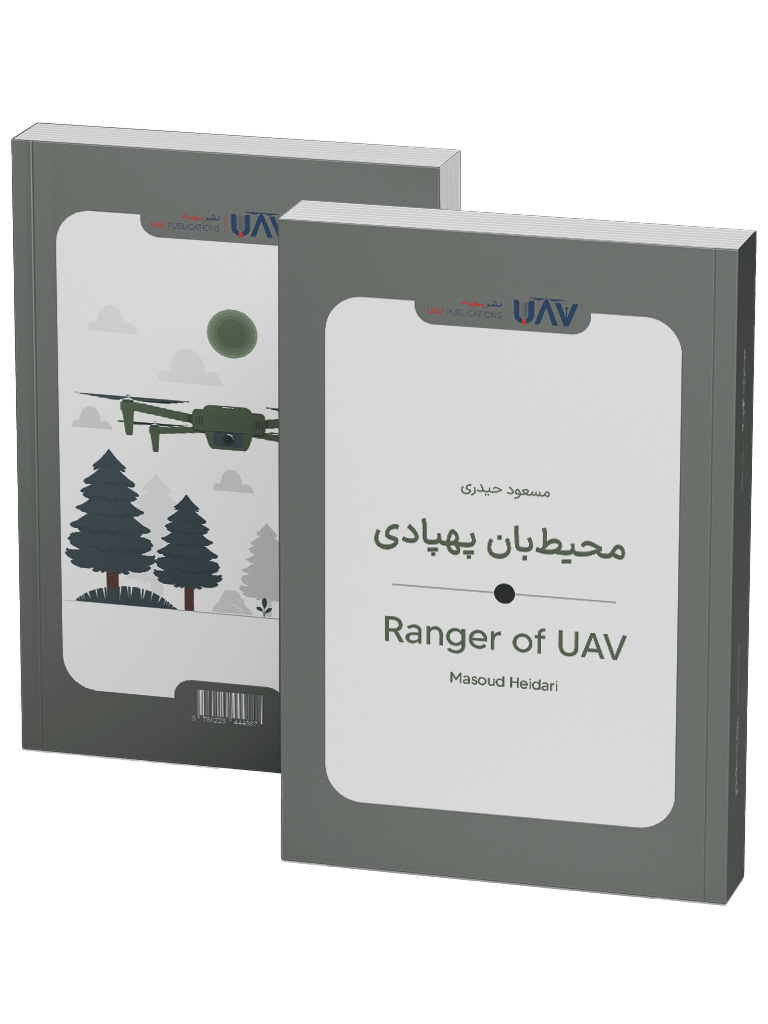Book – Ranger of UAV
“Ranger of UAV” by Masoud Heidari is the first specialized work dedicated to exploring the role of unmanned aerial vehicles (UAVs) in environmental conservation. Published by UAV Publications, the world’s first publishing house dedicated solely to drone technology, this book presents a scientific, humane, and practical perspective on how modern technology can become an ally to nature and its protectors.
From detecting illegal poachers to rescuing endangered wildlife, from monitoring wildfires to documenting habitat destruction, the Ranger of UAVs showcases the numerous ways UAVs can augment the efforts of environmental rangers. It is an essential resource for park rangers, environmental science students, conservation managers, technology enthusiasts, and all those who envision a greener future for our planet.
More than just a technical manual, this book is an invitation to see nature through the eyes of a smart, soaring sentinel—one that replaces bullets with images and spreads peace across the skies instead of fear.
Introducing the Book UAV Ranger
UAV Ranger, authored by Masoud Heidari and edited by Hossein Beheshti-Far, was published in 2024 by UAV Publications—the world’s first specialized publishing house dedicated to unmanned aerial vehicles (UAVs). Written in accessible yet practical prose, this groundbreaking work explores the transformative role of drones in wildlife protection and environmental conservation. In an era of escalating ecological crises and diminishing efficacy of traditional methods, this book offers a compelling case for how technology can serve the cause of preserving Earth and its biodiversity. Drawing on real-world case studies from multiple countries, the author examines the practical applications of UAVs in tracking illegal poachers, monitoring wildlife, detecting forest fires, and preventing the trafficking of endangered species.
Why Drones Represent the Future of Environmental Protection
Faced with expanding ecological threats, limited human resources, and the difficulty of surveying vast natural landscapes, the use of drones in conservation has become not merely advantageous but essential. UAVs can operate tirelessly around the clock and under adverse weather conditions, transmitting live images, videos, and data. Whether tracking wildfires, combating illegal hunting, or surveying wildlife populations, drones offer cost-effective and exact tools that alleviate significant burdens from human rangers. Moreover, they can dramatically reduce the need for rangers to enter hazardous terrain. It is no wonder many experts believe the future of conservation is inconceivable without UAVs.
A Brief History of Drones in Environmental Conservation
The deployment of drones in conservation is a relatively recent but remarkably impactful development. Initial experiments date back to the early 2010s when organizations like WWF and African national parks first used rudimentary UAVs to detect poachers. The technology has advanced rapidly and is now an integral component of environmental monitoring systems in many countries. Initially tested in dense forests and rugged terrain, drones are now also used in coastal, mountainous, and desert regions. Equipped with infrared sensors, high-resolution cameras, and artificial intelligence, modern UAVs can accomplish in minutes what used to take hours, transforming their role from novelty to necessity in the history of conservation.
How UAVs Are Saving the Lives of Rangers
In many parts of the world, wildlife rangers face grave risks—from encounters with armed poachers to navigating treacherous terrain and facing wild animals. Drones serve as a second set of eyes, protecting these frontline guardians. UAVs can survey dangerous areas before rangers enter, sending real-time visuals to inform decision-making. When suspicious activity is detected, rangers can take action without putting themselves in danger. In some cases, drones have provided the critical time needed to respond to emergencies, such as sudden fires or sightings of poachers. In a world where threats to rangers are growing, UAVs have become more than tools—they are shields of protection.
Global Leaders in Drone-Based Conservation
Several countries have taken the lead in employing drones for environmental stewardship. Rwanda and Kenya were among the first in Africa to deploy UAVs against poaching. In the United States, drones are used extensively in national parks, such as Yellowstone, to monitor wildlife and manage wildfires. Australia uses UAVs to safeguard its fragile coral ecosystems. In India, where biodiversity spans vast habitats, nationwide drone conservation programs have emerged. These nations not only lead technologically but also have developed the regulatory, educational, and logistical frameworks necessary for UAV conservation. Their models offer valuable lessons for others, including Iran.
Who Is a UAV Ranger?
A UAV Ranger is not just versed in traditional conservation methods; they are also skilled in operating drones and analyzing the data they generate. These professionals must conduct safe and effective UAV flights, interpret imagery, and respond appropriately to suspicious findings. Key competencies include airspace awareness, basic drone maintenance, camera calibration, flight map interpretation, and proficiency with environmental monitoring software. Beyond technical skills, UAV Rangers must possess sharp attention to detail, patience, and the ability to make swift decisions under pressure. This role uniquely merges technological fluency with ecological devotion—guardians who patrol the skies for the voiceless creatures below.
Farewell to Illegal Poachers!
The advent of UAVs has upended the strategies of illegal poachers. Conservation patrols are no longer restricted to the ground—there are now ever-watchful eyes in the sky. Many poachers have been forced to alter their methods, and some have even attempted to jam signals or shoot down drones. While UAVs still face limitations such as battery life and range, the technological balance is tipping in favor of rangers. With more innovative tools than the threats they combat, UAVs have become formidable defenders of wildlife.
Drones and the Protection of Endangered Species
One of the most critical applications of UAVs in conservation is the protection of endangered species. Drones can discreetly gather high-precision imagery and data from sensitive habitats. In Africa, for instance, UAVs are used to monitor white rhinos, offering early warnings of poaching activity. In Iran, this technology could play a vital role in conserving the Asiatic cheetah, Persian onager, and brown bear. UAVs equipped with thermal sensors can even track nocturnal animal movements, revealing valuable behavioral patterns—data that is indispensable for designing effective conservation programs. In this light, drones emerge as scientific and ethical instruments for safeguarding life on the brink.
Are Drones Harmful to Nature?
While drones are powerful tools for conservation, improper usage can disrupt ecosystems. Loud UAVs may frighten birds or disrupt their routines. Flying too close—especially during nesting seasons—can drive birds from their habitats. Drone crashes in ecologically sensitive zones can also cause pollution. Therefore, proper training and strict adherence to ethical and environmental guidelines are vital. When used responsibly, drones become allies of nature; misused, even the best technology can endanger what it seeks to protect.
Combating Wildfires with UAVs
One of the most vital applications of drones in conservation is the early detection of wildfires. Many fires, if addressed within minutes, can be contained before causing significant damage. Through routine patrols and thermal imaging, UAVs can identify hotspots before flames erupt. This technology has helped many nations prevent catastrophic forest fires. In Iran’s vulnerable regions, such as the Zagros and Arasbaran forests, drones could become a frontline tool for early intervention. Post-fire, UAVs can assess damage, locate affected areas, and aid in planning restoration efforts, serving as both emergency responders and recovery architects.
More Accurate Wildlife Census with UAVs
Conducting accurate animal population surveys in hard-to-reach habitats has long been a challenge for conservationists. UAVs now allow for faster, cheaper, and more precise data collection. UAV Ranger shares firsthand experiences such as bird census operations on Ashk Island or tracking rare species in Iran, demonstrating how drones are replacing costly and error-prone traditional methods. This section acquaints readers with pixel mapping, high-altitude imaging, and interpreting wildlife data from aerial perspectives.
From Detecting Violations to Documenting Habitat Destruction
Illegal loggers, poachers, and land grabbers often complete their crimes before rangers can intervene. Drones, however, can monitor real-time activity and record it as evidence. The book details how live imagery, thermal data, and even onboard audio recordings from UAVs can support legal action against environmental offenders. Advanced image recognition algorithms can autonomously flag suspicious activity, ushering in a new era of innovative, precise conservation.
Essential Skills for the UAV Ranger
Chapter Two provides a comprehensive overview of the skills required for a UAV Ranger: drone piloting, GIS software proficiency, multispectral image analysis, topographic map reading, environmental data interpretation, and familiarity with drone regulations. The author underscores that while technology is critical, it’s the human behind the controls who determines its impact. This section is handy for environmental science students or officials seeking to modernize their protection units.
When Technology Becomes a Lifesaver
Drones are not just surveillance tools; they can be lifesavers for rangers. The book recounts real incidents where UAVs helped prevent fatal encounters with armed poachers or wild predators by providing live warnings. This profoundly human and emotional chapter reminds us that technology is not here to replace humans, but to protect them.
Rangers of the Future Are Data Analysts, Too
One of the book’s more forward-looking insights is the evolving role of the conservationist. Future rangers will not only patrol the natural world but also analyze data, interpret maps, and contribute to informed policy decisions. UAV Ranger showcases successful models from around the world, demonstrating that tomorrow’s stewards of nature must combine environmental passion with technological literacy and analytical acumen.
Artificial Intelligence in UAV Data Analysis
One of the most fascinating sections discusses the integration of artificial intelligence in drone-based data analysis. The author illustrates how machine learning algorithms can automatically process UAV imagery to identify wildlife, detect unusual activity, or analyze vegetation cover. This not only accelerates data interpretation but significantly enhances precision, positioning drones as intelligent data hubs rather than mere flying cameras.
UAVs and Environmental Education in Local Communities
Another noteworthy application of drones explored in the book is their role in education and awareness. In communities bordering protected areas, UAV imagery has helped visualize habitat loss and species presence, fostering a greater understanding of the environment. UAVs become bridges—linking scientific insight to public consciousness. Real-world examples from Africa and Asia show how visual education can catalyze behavioral change.
Infrastructure Required for UAV-Based Conservation
Implementing drone conservation is more than just purchasing devices—it requires a robust infrastructure and effective management. In the final chapters, the author outlines the critical needs for reliable communication networks, spare parts supply chains, flight permits, continuous training, technical support, and interagency coordination. Any missing link can jeopardize the entire system. This section offers a roadmap for environmental policymakers and administrators seeking to establish UAV Ranger units.
Iranian Experiences in Drone Conservation
A dedicated chapter covers Iran’s own UAV conservation projects. From lush northern preserves to the deserts of Yazd and Kerman, the book presents documented missions highlighting both successes and challenges. Through interviews with local experts and rangers, it captures Iran’s growing capability in adopting advanced conservation technologies, offering motivation for further national development.
The Future of Conservation and Training a New Generation
The book concludes with a forward-thinking vision: the future of conservation lies not only in embracing technology but in cultivating a new generation of rangers fluent in its language. Specialized education, well-equipped universities, partnerships between environmental and tech institutions, and political and financial support form the pillars of this future. UAV Ranger closes with a powerful message: loving nature is no longer enough—we must put technology in the service of that love.
| Book Author | |
|---|---|
| Book Edition |
First |
| Book Isbn |
978-622-94448-8-7 |
| Book Pages |
60 |
| Book Publish Year | |
| Book Language | |
| Book Publisher |



